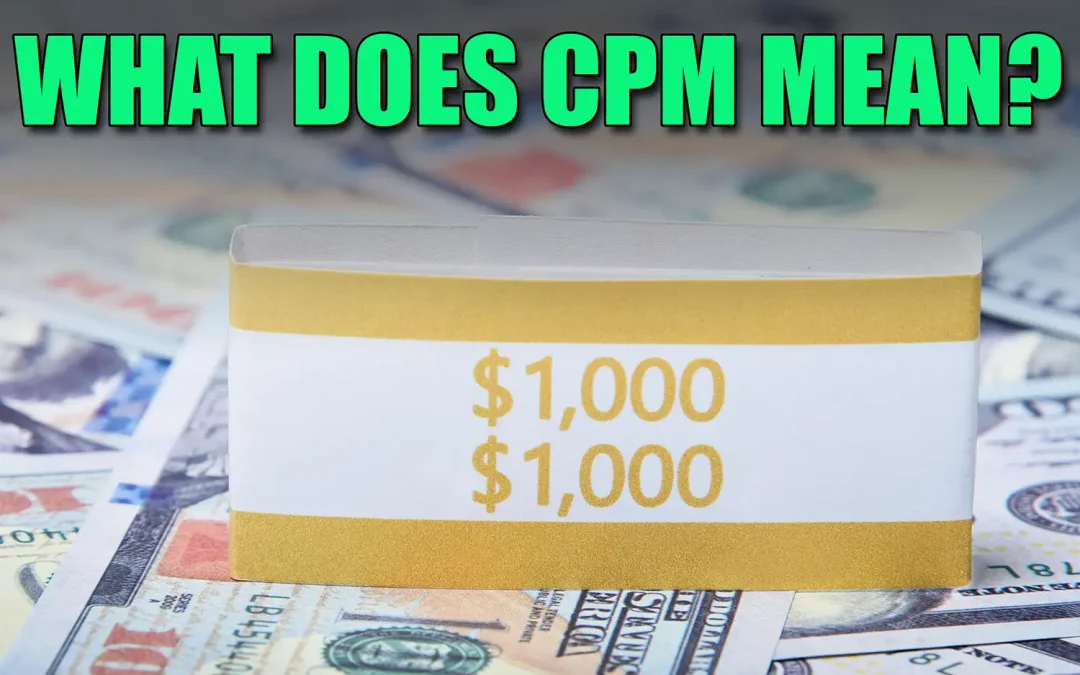What Does CPM (Cost per Mille) Actually Mean?
The growth of any company these days heavily relies on its digital marketing strategies. However, for an effective digital marketing strategy, certain metrics must be constantly analyzed. Among these metrics, monitoring the CPM of the ads is especially important. But what does CPM mean, and how does it exactly work?
For the answers to your queries, read on as we discuss CPM and its importance for a business.
What Does CPM Mean?
The full form of CPM is Cost per Mille. It is also known as the cost per thousand impressions. It can be defined as the money a business spends for a thousand ad impressions. Impressions are the number of times your ads are viewed by users. The more views you get, the more your brand’s reach and, hence, more chances for sales.
By monitoring the CPM of an ad, a company can evaluate the cost-effectiveness of its marketing campaign. Besides this, the metric also helps you evaluate optimal budgets for running ads on various platforms.
How Can CPM Be Calculated?
CPM can be calculated using the following formula:
CPM = (cost ÷ impressions) × 1000
So, if you’re spending $1000 running an ad that receives 100,000 impressions, the CPM will be:
CPM = (1000 ÷100,000) × 1000 = $10
This means that for every 1000 views of your ad, you are spending $10. Now, you may be wondering what the generally good CPM value is. It primarily depends on the platform you’re running the ad on.
For more clarity, let’s take the example of Facebook ads. The average Facebook CPM for technology-based services was $9.98 in 2023. So, any CPM value significantly higher than that for similar product/service ads would be a red flag.
Ways to Lower the CPM Value of Your Ads
Now that you’ve learned what CPM means and how it can be calculated let’s understand how it can be lowered. You can do this by adjusting the following factors:
Target Audience: The more general your audience, the more you’ll have to pay for your ads. By making your ads more relevant to a specific audience, you can pay less while still getting more engagement.
Timing and Placement: Running ads on multiple platforms is costly and often unnecessary. Only place ads on the best-performing platforms that guarantee significant returns. Also, be strategic with the timing and frequency of the ads by analyzing peak interaction hours.
Appeal: An aesthetically pleasing ad relevant to the target audience will attract more people. This will encourage user engagement and views, lowering the overall CPM.
Bid Strategy: Bid strategies are always a great way to adjust a CPM value. You may have to experiment with a few in the beginning to find the one that works best for you. This may take time, but experimenting is important for all digital marketing strategies.
Conclusion
If you’re looking to run ads for your business online, CPM is a crucial metric to monitor. Now that you know the answer to “What does CPM mean?” you’re all ready to get started,
However, if you still think you need more guidance, contact me today! I’m Alex Smale, and I can help you plan a highly effective digital marketing strategy for your brand. My years of experience as a digital marketer, business consultant, and developer have helped boost the growth of many businesses.

